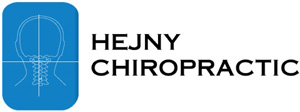 A migraine is something no one looks forward to having. While it is going on, the only thing you can think about is finding relief. A migraine is characterized by the following symptoms:
A migraine is something no one looks forward to having. While it is going on, the only thing you can think about is finding relief. A migraine is characterized by the following symptoms:
A day or two before a migraine:
- Feeling depressed or cranky
- Restless or nervous
- Very happy and exuberant
- Extremely tired
- Craving food or being thirsty or loss of appetite
An aura just before a migraine occurs:
- Seeing spots or wavy lines
- Numbness or “pins and needles” feeling in your arms, face, or hands
When a migraine starts:
- Pounding or throbbing pain, usually on one side of the head
- Pain behind your eyes
- Nausea and/or vomiting
- Moderate to severe pain
- Sensitivity to light, odors, or sounds
- Pain that intensifies with physical activity
- Trouble with speech
- Tingling in the shoulders, face, or arms
- Temporary weakness on one side of your body
After a migraine subsides:
- Muscle aches
- Feeling of exhaustion
A migraine is the 3rd most prevalent illness worldwide. In the United States, 1 out of every 4 households has someone who suffers from a head pain. A migraine is most common in ages 25 to 55. More than 4 million people have a chronic daily head pain. This means they have 15 or more days per month.
To learn more about the connection between head and neck injuries and migraines, download our complimentary e-book by clicking the image below.
Table of Contents
Identifying Triggers for a Migraine
If you have ever had a migraine, you know you will do everything possible to avoid another one. One way to do this is to try to find what triggers your head pain and avoid that if possible. You will want to begin by keeping a migraine diary. You can download one here. It is a great tool to help you see a pattern developing before a head pain hits. This will be helpful in understanding what makes your migraine happen. Once you realize what your trigger is, you can work hard to avoid that if at all possible and then hopefully have fewer headaches. Here are some triggers that are common to people with headaches:
- Tyramine or phenylethylamine: These are amino acids that are found in a variety of foods, such as chocolate, aged or fermented cheese (bleu, brie, cheddar, and all hard or “moldy” cheeses), citrus fruit, nuts, soy, and vinegar (red and balsamic)
- Caffeine: If you have a sensitivity to caffeine, you may get a migraine from drinking black or green tea, cola, coffee, or other caffeinated beverages. However, the opposite may be true for some people. Caffeine can often stop a headache that is just about to start. In fact, many over-the-counter medications for migraine headaches contain caffeine. Be sure to note how it affects you, and if it gives you a headache, avoid it.
- Aspartame: An artificial sweetener that is known to trigger migraines in some people. It is often found in diet beverages, light yogurts, low-calorie desserts, and sugar-free candy. It is also known as NutraSweet and Equal.
- Common food additives: Many food additives have been seen to be a cause for head pain, such as MSG (monosodium glutamate), hydrolyzed or autolyzed yeast, yeast extract, hydrolyzed vegetable protein (HVP), hydrolyzed plant protein (HPP), kombu extract (used in Asian food), and sodium caseinate.
- Sulfites: This is another type of preservative that is often found in dried fruit (prunes, figs, and apricots), wine (white and red), and many processed foods. Be sure to check labels carefully if these are a trigger for you.
- Tannins: These are plant compounds that give food an astringent taste – the one that makes you have a dry, puckering sensation in your mouth. It is contained in red-skinned apples, tea, pears, apple juice, cider, and all red wine. More evidence is needed to confirm this, but it has been reported as a strong, consistent migraine trigger for some people.
- Nitrates: Used mostly as a preservative and for added flavor, nitrates are found in hot dogs, deli meats, pepperoni, sausages (chicken, turkey, and soy), jerky (beef and turkey), corned beef, and any other food that has been cured, pickled, smoked, or canned.
- Leftovers: Tyramine content can increase over time if food has been stored improperly. Be particularly cautious when eating leftovers from the office or at parties. Many times these foods have been set out for long periods without being refrigerated. It is important to store food promptly and in airtight containers.
- Alcohol: Tyramine is contained in many types of alcohol, including beer, red wine, vermouth, and sherry. In addition, any form of alcohol can cause dehydration – a major contributing factor to migraine headaches. You may want to alternate your alcoholic beverage with water or seltzer.
How to Find Migraine Relief
The truth of the matter is, you can find and avoid your personal triggers to stay away from migraines, but they will continue to occur unless the underlying cause is addressed. This is often a misaligned vertebra in the upper cervical spine. The C1 and C2 vertebrae have the important job of protecting the brainstem from injury. However, if they become misaligned, due to an accident or a minor blow to the head, they can put stress on the brainstem and cause it to send improper signals to the brain. Blood flow can also become restricted and nerves can be irritated, leading to migraine headaches. Thankfully, there is a simple and easy solution.
Here at Hejny Chiropractic in Spring Lake Park, Minnesota, we use a gentle procedure that helps the bones to realign without the added stress of popping or cracking them. They move naturally back into place and stay longer than if they were forced. This has helped many patients with their head pain. Some see their migraines go away and not return.
To schedule a complimentary consultation with Dr. Hejny, call our Spring Lake Park office at 763-230-0116. You can also click the button below.
 If you are outside of the local area, you can find an Upper Cervical Doctor near you at www.uppercervicalawareness.com.
If you are outside of the local area, you can find an Upper Cervical Doctor near you at www.uppercervicalawareness.com.
